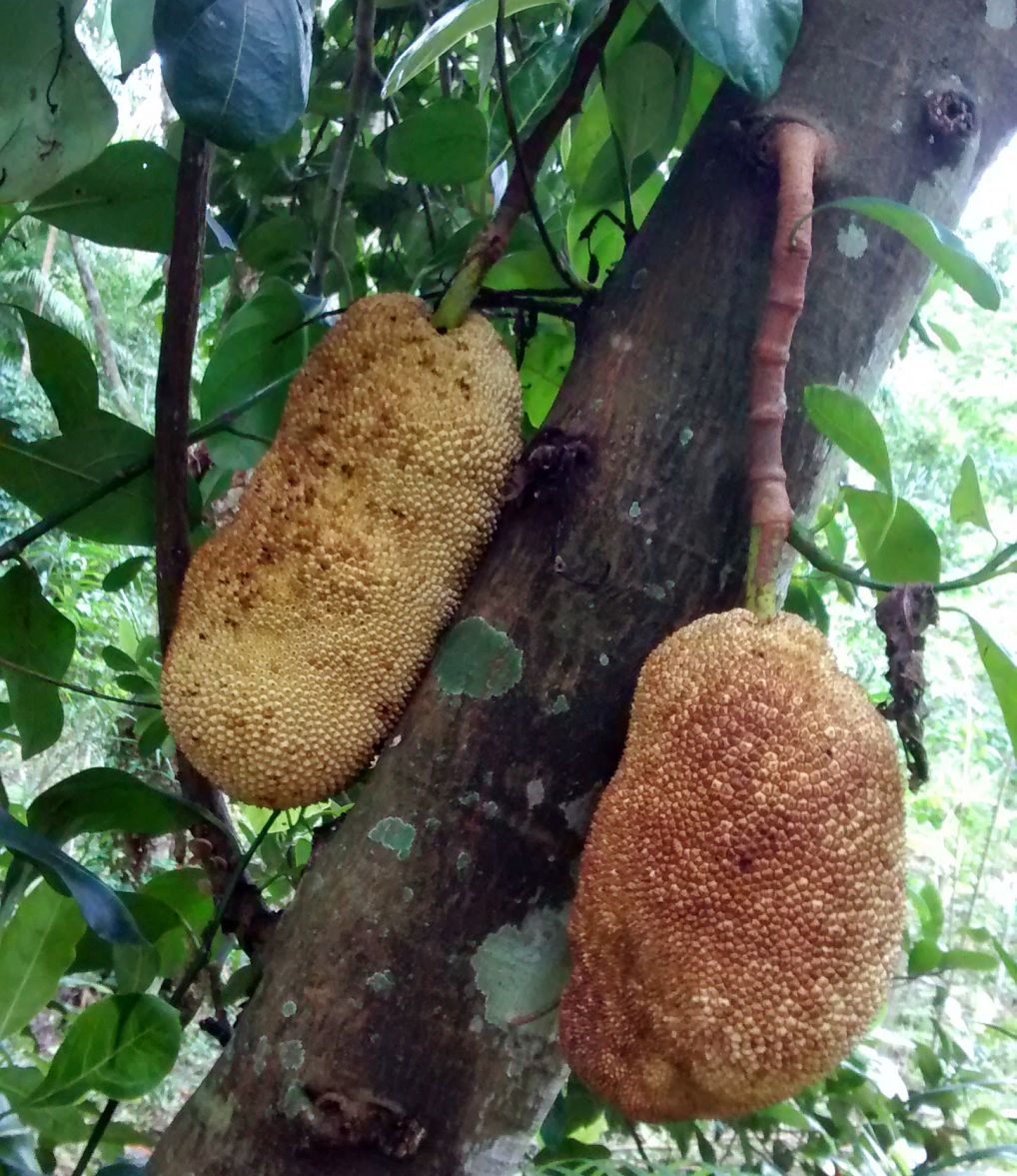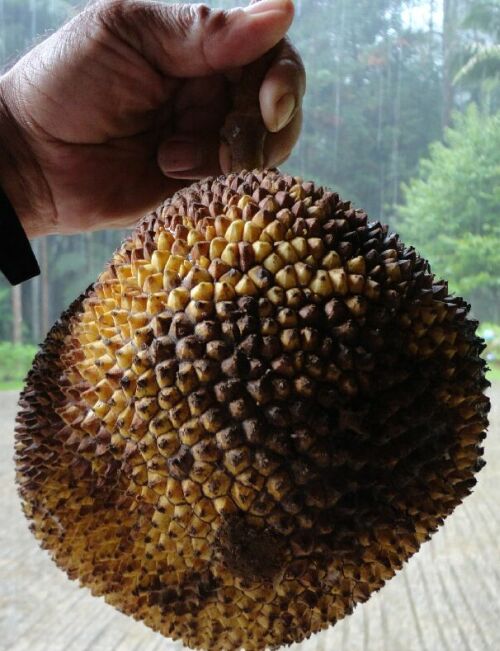| Back |
|
| Back |
|
  Jaca ( F r u i t ) in Brazil matures March - April The jackfruit tree is a widely cultivated and popular food item in tropical regions of India, Bangladesh, Nepal, Sri Lanka, Cambodia, Vietnam, Thailand, Malaysia, Indonesia, and the Philippines. Jackfruit is also found across Africa (e.g., in Cameroon, Uganda, Tanzania, Madagascar, and Mauritius), as well as throughout Brazil and in Caribbean nations such as Jamaica. Jackfruit is the national fruit of Bangladesh. The jackfruit has played a significant role in Indian agriculture for centuries. Archeological findings in India have revealed that jackfruit was cultivated in India 3000 to 6000 years[clarification needed] ago. It is also widely cultivated in southeast Asia. Thailand and Vietnam are major producers of jackfruit, a lot of which are cut, prepared and canned in a sugary syrup (or frozen in bags/boxes without syrup), and exported overseas, frequently to North America and Europe. In other areas, the jackfruit is considered an invasive species as in Brazil's Tijuca Forest National Park in Rio de Janeiro. The Tijuca is mostly an artificial secondary forest, whose planting began during the mid-19th century, and jackfruit trees have been a part of the park's flora since its founding. Recently, the species has expanded excessively; its fruits, which naturally fall to the ground and open, are eagerly eaten by small mammals such as the common marmoset and coati. The seeds are dispersed by these animals, which allows the jackfruit to compete for space with native tree species. Additionally, as the marmoset and coati also prey opportunistically on bird's eggs and nestlings, the supply of jackfruit as a ready source of food has allowed them to expand their populations, to the detriment of the local bird populations. Between 2002 and 2007, 55,662 jackfruit saplings were destroyed in the Tijuca Forest area in a deliberate culling effort by the park's management. Aroma
Jackfruit are known
for having a distinct aroma. In a study using five jackfruit cultivars,
the main jackfruit volatile compounds that were detected are: ethyl
isovalerate, 3-methylbutyl acetate, 1-butanol, propyl isovalerate, isobutyl isovalerate, 2-methylbutanol, and butyl isovalerate. These compounds were consistently present in all the five cultivars studied, suggesting that these esters and alcohols contributed to the sweet and fruity aroma of jackfruit. |